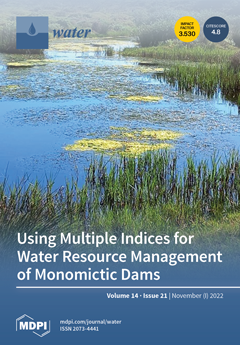The relevance of studying the spatial-temporal dynamics in the trace element composition of the water at the Angara River source is associated not only with determining the degree of anthropogenic load on the local area of the water body but also with the use of the water chemical composition of the Angara River source as an integral indicator of the hydrochemical state of the entire Lake Baikal. The current work is based on monthly monitoring studies conducted from March 2021 to February 2022 along the left shore, middle part, and right shore of the Angara River source. In water samples, the concentrations of Al, Cr, Mn, Fe, Co, Ni, Cu, Zn, As, Cd, Sn, Cs, Tl, Pb, Th, and U were measured by inductively coupled plasma mass spectrometry. The results indicated that the concentrations of the trace elements lie within mean + 1SD: Cd in 97% of samples; U in 94% of samples; Tl in 92%; Al, Cr, Co, Ni, Cu, Zn, Sn, Pb, and Cs in over 80%; Fe in 78% of samples; and Mn and Th in over 60% of samples. Such results show a high degree of consistency in the water trace element composition at the source of the Angara River. The major factors responsible for the water hydrochemistry at the Angara River source include the runoff of Lake Baikal, the anthropogenic effect of Listvyanka and Port Baikal settlements, and water transport activity. The concentrations of all trace elements in the water of the Angara River source are substantially below the standards for drinking water. At the same time, the single-factor pollution index revealed water samples with considerable contamination by Fe, Zn, Sn, Al, Cs, Mn, Cu, Tl, Cd, Pb, and Th and very high contamination by Cr, Fe, Co, Cs, Tl, Pb, and Th. The pollution load index has classified most of the water samples as having baseline levels of pollutants. Three samples taken from the left shore, four from the middle part, and seven from the right shore were classified as polluted. This means that the ongoing anthropogenic impact may worsen the water quality and have a negative impact on living organisms. The obtained results make a clear case for strengthening environmental protection measures to minimize the anthropogenic effect on the ecosystems of Lake Baikal and Angara River.
Full article





